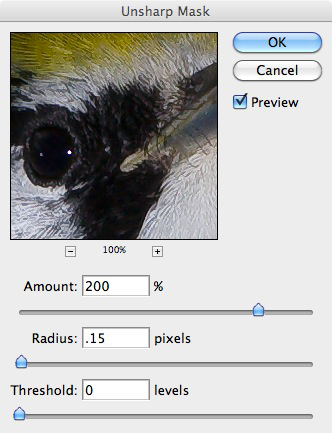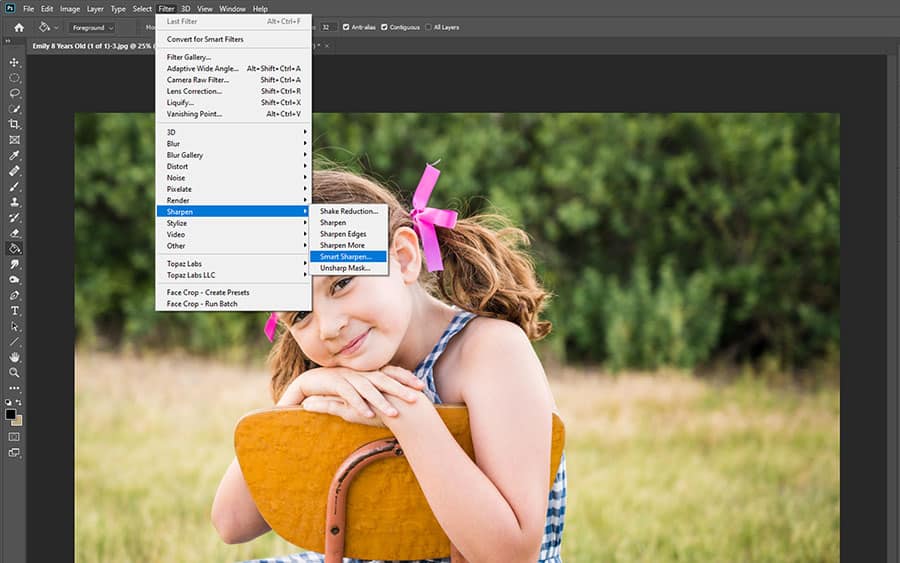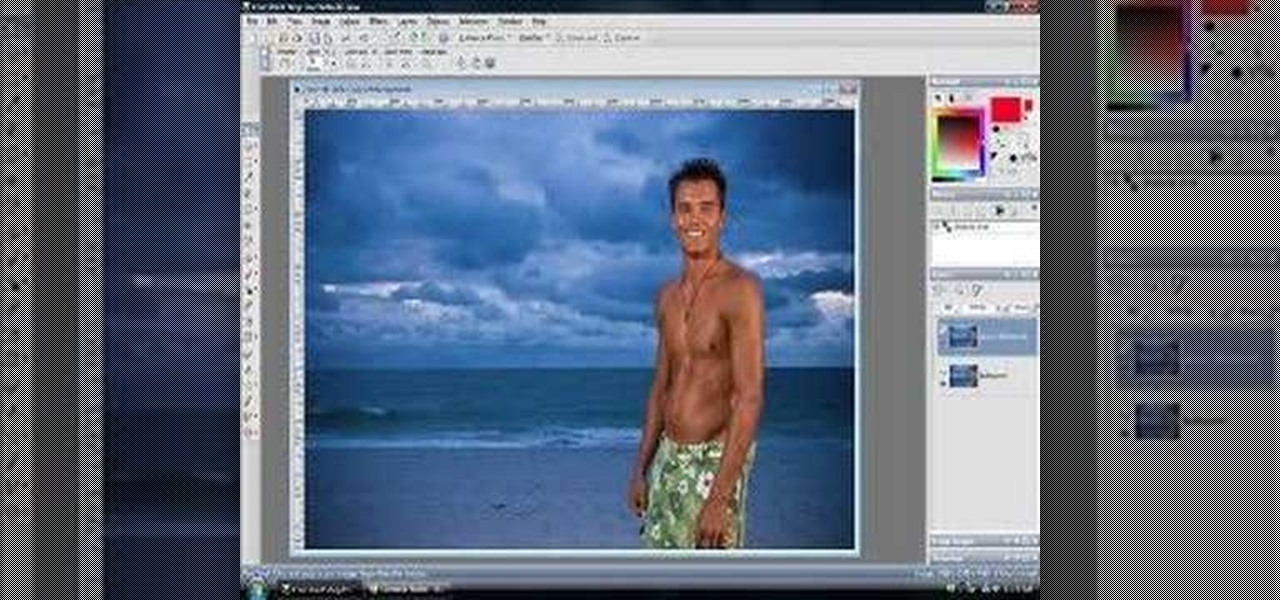


Using the unsharp mask requires understanding its three settings: 'Amount,' 'Radius,' and 'Threshold.

It can be accessed in Adobe Photoshop by clicking on the following drop-down menus: Filter > Sharpen > Unsharp Mask. Its more work but with a bit of practice is a much more controllable method of single pass sharpening. Fortunately, sharpening with an unsharp mask in Photoshop and other image editing programs is quick and easy. If I know I will be printing out at a large size I will then do a selective A4 print at the same level of scaling and see how it looks and then go back and adjust the sharpening accordingly. If you want to selectively sharpen then apply a layer mask and paint in the sharpening. If you get noise problems then run your favourite noise programme on the high pass layer. You can then adjust the opacity of the high pass layer to adjust the sharpening intensity or adjust the levels on the high pass layer only. On the larger sizes this tends to reduce accentuation of noise in sky etc but a neat trick is to duplicate the base layer and apply filter>other>hipass with a radius of around 1.5 and with layer mode of overlay. As the latter may well be blown up to different sizes up to Billboard I sharpen to different amounts on different layers often with a layer mask. I tend to use regular USM on portraits (I dont like what SS does to skin and hair) and SS on my Architectural work. Denoiser III offrs noise rduction in one stp using default sttings, and features fiv simple sliders fr fine-tuning th settings if yu want to, aIthough Red Giant cIaims that you probabIy wont even ned to.Denoiser III is GPU-accelerated and renders in near real-time.It works as a plug-in in After Effects, Premiere Pro, FCP X, and Motion.Add to Cart Add to Wish List Emailed.


 0 kommentar(er)
0 kommentar(er)
